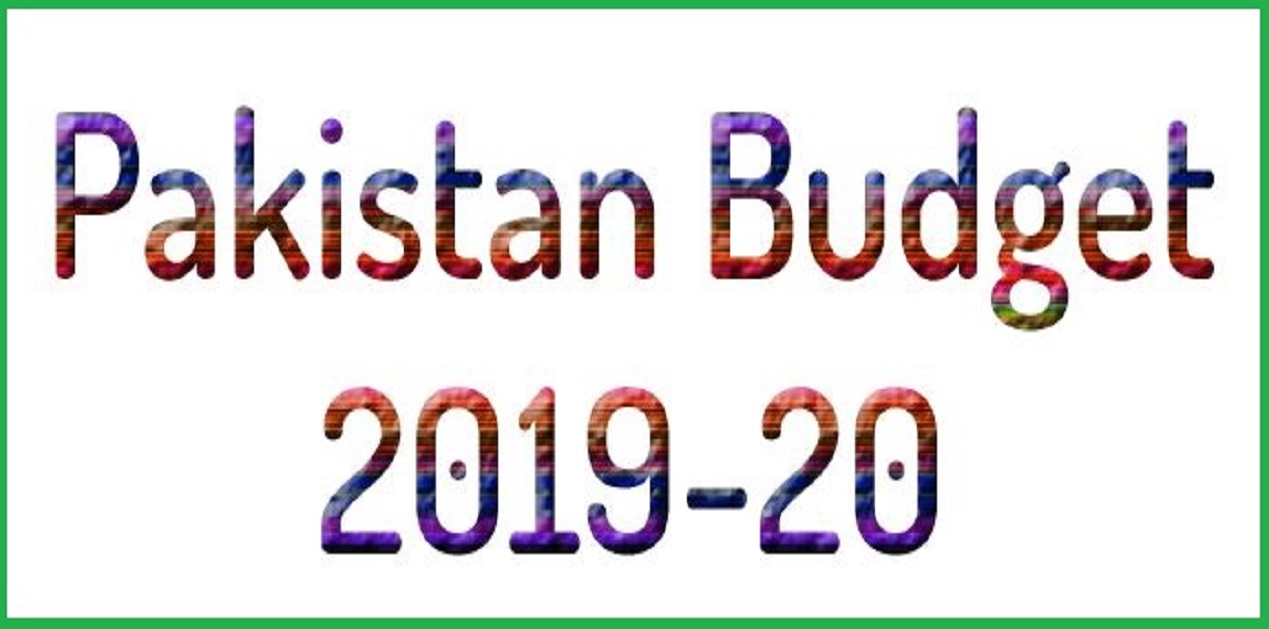Pakistan’s Federal Budget was unveiled on June 11, 2019, under the looming shadow of International Monetary Fund’s (IMF) conditionalities seeking to curb the consistently misused fiscal space as well as the gloomy growth projection of 2.4 percent for the Financial Year (FY) 2019-20.1 The highlight of the budget is its fixation with maximizing revenue collection in order to signal the IMF about Pakistani economy’s capacity to raise resources, which is also the basis of the $6 billion bailout agreed by the IMF.
The total estimated expenditure is PKR 7.022 trillion, along with the outlay of PKR 8.24 trillion with a current expenditure (non-asset generating expenditure) of PKR 7.29 trillion.2 Estimated current expenditure has registered an alarming rise of 75 percent over the last Financial Year’s figure (PKR 4.7 trillion) with largest increase coming from rise in the domestic and foreign debt servicing from PKR 1.9 to PKR 2.8 trillion (almost 48 percent). The defence expenditure registered a slight increase from the previous year’s spending of PKR 1.13 trillion to PKR 1.15 for 2019-20. Expenditure related to pensions and daily civil administration, again a part of the current account budget is estimated at PKR 510 billion.
Since the government could not do much about cutting on the current expenditure, consisting of payments on loans, interests and other day to day governance expenditures, as compensation, it cut the development expenditure by 17.4 percent, from PKR 1.15 trillion to PKR 950 billion (of which PKR 700 billion is allocated to the Public Sector Development Expenditure (PSDP). For provincial share of the PSDP, the government allocated PKR 917 billion.
It must be recalled how the new government promised to embark on an ‘austerity’ drive when it claimed to be working on reducing expenses on running civil government but the funding cut appears to be too modest - a reduction from PKR 217 billion last year to PKR 187 billion at present. In fact, the socio economic sector has registered some serious expenditure cuts. The Education Budget stood at PKR 77 billion, a reduction of PKR 20 billion from the amount allocated in 2018-19. For environment protection, the allocation dwindled from an already meagre PKR 1.2 billion during the last year to PKR 470 million at present. Allocation under the head of Economic Affairs (spending on Agriculture, mining, manufacturing, construction and communication) registered a steep cut from PKR 142 billion last to 84 billion in the present budget (almost 70 percent reduction). It is unsure what led to such a dismal allocation to the economic affairs this year especially when actual allocation (PKR 142 billion) rose up by 80 percent over the proposed allocation (PKR 80 billion) last year.
Gross Revenue target is estimated at PKR 6.71 trillion, which is 25 percent higher than the collection during FY 2018-19 (PKR 5.031 trillion). Minus the provincial share of PKR 3.25 trillion, the Net Revenue Target stands at PKR 3.46 trillion. Given the pressure to raise revenues, an ambitious target of PKR 5.55 trillion has been selected for tax revenue, which is almost 35 percent higher than the amount raised last year (PKR 4.15 trillion). The goal is to raise direct taxes by 25 percent to PKR 2.09 trillion and indirect taxes by a staggering 39 percent to PKR 3.4 trillion. The budget even proposes a 40 percent hike in the non-tax revenue to PKR 894 billion.
In light of such ambitious targets and challenges faced by the Pakistani economy, this naturally raises questions on Pakistan’s ability to raise revenue. In the domain of direct taxes, the government took the unpopular route of reducing the income tax slabs from 12 lakh per annum to 6 lakhs per annum, a move which has not gone down well with the middle class. Given the poor history of tax collection and rampant tax evasion, Pakistan has one of the lowest tax-to-GDP ratios in the world at below 11 percent. Only two million people file income tax returns – out of which 600,000 are employees in the organized sector. 380 companies account for 80 percent of the total tax. There are over 341,000 electricity and gas connections, but only 40,000 (less than 10 percent) are registered with sales tax. Only 1.4 million out of 3.1 million commercial consumers pay tax. Out of 50 million bank accounts, only 10 percent pay tax. Out of 100,000 companies registered with Security and Exchange Commission of Pakistan, only half pay tax. Pakistan’s revenue collection target in all their budgets has been ambitious; last five years’ record shows a shortfall in actually meeting the targets in the revised estimates. For FY 2018-19 too, the net revenue receipts were 17 percent lower than the target estimate.
In the domain of indirect taxes, the revenue collected from customs duty is expected to be at PKR 1 trillion, almost 36 percent higher than last year collection despite the Revenue Minister claiming in the budget speech that duty on more than 1600 tariff lines – mostly raw materials and intermediaries – has been exempted. However, this loss is expected to reduce from higher industrial growth which seems tepid at the moment. Similarly, duties on various machinery items, steel strip, domestic appliances, items of medicinal use etc. have either been reduced or exempted. However, the rate of additional customs duty has been increased from 2 percent to 4 percent and 7 percent on the sales slab of 16 percent and 20 percent respectively. This, in principle, includes imported finished products, including luxury items. 5 percent customs duty has been proposed on import of LNG, which was earlier exempt from duty. Sales tax target too shows an unrealistic projection at PKR 2.1 trillion, which is almost 41 percent increase over the previous year. The government has adopted easier collection of revenue by increasing the general sales tax rate of 17 percent. Extra tax of 2 percent, levied on various items of confectionary to machinery parts, has been withdrawn from two items – auto parts and arms and ammunition. Tax on sugar has been increased from 3 percent to 17 percent, making the hike unpopular among the masses.
On 30th June 2019, Pakistan’s President Dr. Arif Alvi has signed the Finance Bill 2019-20, after it was passed with a marginal majority of 176 against 146 votes in the National Assembly.3 However, despite the massive tax plan, the targeted Fiscal Deficit remains at PKR 3.15 trillion (7.022 trillion expenditure minus 3.46 trillion net revenue collection and 456 billion provincial surplus) or 7.1 percent of GDP in 2019-20, same as during the last financial year. The PTI-led government’s maiden budget 2019-20 targets would hold only if the over-ambitious revenue collection mobilisation measures are fruitful. However, to that effect, the budget seems unrealistic.
References:
- Syed Raza Husan and Drazen Jorgic, “Pakistan stocks up, but IMF-friendly budget gets mixed reviews”, Reuters, London, June 12, 2019.
- Budget Speech 2019-20, June 11, 2019. Link: http://finance.gov.pk/budget/budget_speech_english_2019_20.pdf
- Syed Irfan Raza, “PTI manages to get budget passed with 176 NA votes”, Dawn, Islamabad, June 29, 2019.
Image Source: https://gooposts.com/assets/images/postimages/1560258449_jpg_pak-budget-2019-2020.jpg












Post new comment